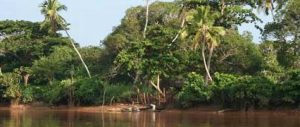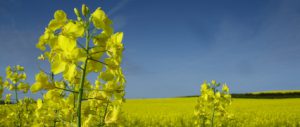Willie Smits’s personal revolution began in 1989 when he encountered a caged baby orang-utan in a market in the province of East Kalimantan, Indonesia. It had, he told a TED audience in 2009, the saddest eyes he had ever seen. He rescued that orang-utan, and then set about saving others.
The threat to the orang-utan, he knew, came from a combination of factors that included the hunting of the animals for sale or food, and the destruction of their habitat by local people who had little alternative income.
More than 20 years later, Willie Smits has saved thousands of orang-utan, created thousands of hectares of forest out of degraded land and, incidentally, claims to have developed a source of energy that delivers prosperity to tropical communities, preserves vibrant and diverse habitats and has the potential to power the world with sustainable biofuel. Is this the fantasy of an environmental activist or a proposition grounded in science?
Across Indonesia, local communities are fighting the rapid encroachment of the oil palms that have been planted to satisfy the world’s growing thirst for biofuel, more than 30,000 square kilometres in Indonesia alone. But such plantations destroy community livelihoods and the tropical forests that also act as carbon sinks. Palm oil production and its associated deforestation has helped to propel Indonesia to third place in the global carbon-emission rankings.
Smits, 54, a Dutch-born Indonesian microbiologist, forester and conservationist, believes that in he has developed a biofuel that has none of these drawbacks. “Out of the 1.6 billion hectares of critical land in the tropical zones, 540 million hectares planted with sugar palm [Arenga pinnata] could replace all the world’s oil by 2030.” he said. “This is what I want people to pick up.”
We met in Hong Kong, where Smits had been talking to potential investors. He opened up his laptop to run one of many PowerPoint presentations that chart a 30-year voyage of discovery. When he married his Indonesian wife in 1980, Smits was surprised to learn that the expected dowry in North Sulawesi was six sugar palms. “I wondered why,” he told chinadialogue, “and I discovered that just six sugar palms could support a young family.”
After years of research, Smits today is a sugar palm evangelist, eager to list the tree’s virtues. “It doesn’t need pesticides or fertiliser, and once it starts producing, it has to be tapped twice a day, which gives employment to local people,” he explained, “so it creates 20 times more permanent jobs per hectare than oil palm. It is highly efficient in converting sunlight to energy and, because it cannot thrive in monoculture, it preserves biodiversity. It has very deep roots, so it never dries out, and it improves the soil by bringing nutrients up. It stores carbon very deep, and it only needs half the water of similar trees because of its waxy leaves. And, it produces 60 useful products, including a wood that is harder than oak.”
As if that were not enough, he continued, it survives fire and volcanic eruption, flood and salt water, can prevent landslides by stabilising slopes, and improves conditions for agriculture downstream. Perhaps most importantly for the global climate: one tree can produce enough ethanol each day to keep a car running year round.
Smits began planting the trees himself in 1985 and dedicated the next 20 years to researching and improving their cultivation and yield: they were difficult to germinate, he said, and the yield varied widely from district to district, depending on what the villagers wanted from them.
“I discovered that on Java, where people are Muslims, they use the unripe fruits of the tree as a delicacy. You can harvest 65 different products from this palm, but because they harvested the unripe fruits, the biggest trees had much less chance to reproduce. They also eat a delicacy made with the starch [sago], so they would cut the biggest trees before they fruited.” Elsewhere villagers preferred to drink palm wine, so they propagated the most productive trees, and eventually grew trees that produced three times as much as those on Java.
Smits also solved an important technical problem – the fact that sugar palm juice ferments immediately, which is good for producing wine but not for much else. The traditional method of preventing fermentation is heat treatment, with local wood as fuel, which has contributed to deforestation.
“That meant that either production would be limited, or we would destroy the surrounding environment,” he said. His pilot factory uses waste heat from the state energy company and he has made the process 5.6 times more energy efficient.
There was also, he admitted, a human problem: four years ago, the elected leaders of the first cooperative he set up in North Sulawesi, to Smits’ dismay, began to embezzle money. After costly legal consultations, he now believes he has a fraud-proof organizational model. Another episode, when tappers began to drink the revenue, was swiftly resolved when their wives intervened.
He raced through his slides: charts of yields of energy per hectare that show sugar palm producing 24,000 litres of ethanol per hectare per year as the norm; diagrams showing increased rainfall over his restored forests; organisational charts of the cooperative enterprises he has modelled and photographs of some of the more than 6,000 village shareholders in the Masarang Palm Tappers Cooperative that he set up in Indonesia in 2007.
The villagers tap the trees and operate the factories that produce ethanol and sugar. They have, he said, trebled their income, and can now educate their children and enjoy social insurance. Each year, they vote on how to spend the profits. “They can only spend them on social projects,” Smits said, “like health clinics or schools. This year, they voted to support orphans and protect wildlife,” an outcome that particularly pleased their patron.
Smits’s claims for his projects have been assessed by six independent studies, most recently at the request of the Dutch government, which has supported the pilot project. These reviews of his work enter some cautions, but are broadly supportive. Now Smits is looking for ethical investors to enable him to scale up an enterprise that he believes could address the world’s energy needs in a production model that would bring prosperity to ordinary producers. He pulled up a map of the world on his laptop and pointed to a wide band across the tropical zone.
“This shows where sugar palm can be grown more profitably than sugar cane,” he said. He has patented a model of a village hub: it has a mini factory, with a satellite connection, which inputs juice, yeast and labour and produces ethanol as well as electricity, drinking water, heat to dry the products, biogas, animal feed and compost for the village. “The investors get sugar and carbon credits out of the scheme, so you can create a win-win-win – for the environment, for the local people and for the investors.”
“If you have sugar, you have everything,” he continued. “You can go to hydrogen, ethanol and lipids, or bio-degradable plastics. Where do you get sugar? In the tropics.”
But if this is such a wonder-tree, why has its potential not been developed before? The reason, Smits believes, lies in the model of agro-industrial investment.
“Sugar palm only grows in secondary forest, which you only find in areas of shifting cultivation. This means that suitable land belongs to local people, and many companies are just not interested in dealing with the social and cultural issues. Most of the cost is in labour, which many companies view as a risk. But if you provide the local people with a good deal, you still have a very high return on investment.”
In the latest independent assessment, an Ecofys and Winrock analysis of feasibility and sustainability, the returns reach a potential 43%, not counting the side products. The report does, however, caution that scaling up would be difficult because of the level of skills required for successful cooperation and investors would need to be patient because of the length of time it takes trees to mature.
“They would have to replicate my model,” Smits admitted, “developing the best trees and the best tapping techniques. I want to roll this out under an ethical model, not making money for the sake of money. I want my patents and research to be used ethically.”
To reap these potentially rich rewards, investors must sign up to 100 sustainability, social fairness and environmental protection criteria that he has devised. Smits himself is handing over control to a company and a foundation he has set up: Tapergie BV company and Tapergie World Foundation. As for himself, “I don’t want to be involved in the management,” he said. “I am a scientist. I don’t like routine or money. I like to teach, do research and innovate.”
His face lit up with the perspective of new territories to conquer. “I have done surveys in Columbia,” he said. “Six million hectares that would be perfect, in Tanzania, too. And some people want to get me to Hainan.”
Isabel Hilton is editor of chinadialogue.
Homepage image by Willie Smits



